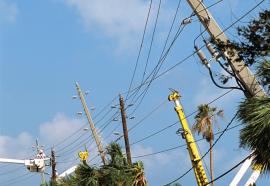Smart-Grid Analytics
Intelligent networks support better decision making.
Sophocles once said, “Quick decisions are unsafe decisions.” Apparently Sophocles did not work in the utility industry. Utilities must make quick decisions every day to maintain a safe and reliable grid. As they have learned, the key to a quick and safe decision is making a well-informed decision. Yet utilities face challenges in providing enough information for their employees and automated systems to make these types of decisions.








